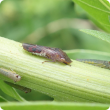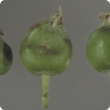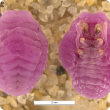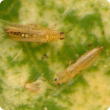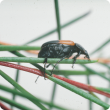Crops
The Department of Primary Industries and Regional Development continues to support the growth and international competitiveness of all crop industries in Western Australia.
With a 2400 kilometre span from its tropical north to its temperate south, WA supports a broad range of cropping industries from rain-fed winter cereals through to irrigated horticultural crops.
In the 2012/13 year the WA cropping industries exported a total of $3.9 billion which comprised: $3.1 billion of cereals, $859 million of pulses, pastures and oilseeds, $142 million of horticultural crops. The major contributors to these exports were wheat ($2.7 billion), canola ($756 million), barley ($377 million), lupins ($42 million), carrots at $48 million, oats ($12 million), and strawberries at $5.5 million.
Articles
Filter by search
Filter by topic
- (-) Remove Pests filter Pests
- Horticulture (5) Apply Horticulture filter
- (-) Remove Pests, weeds & diseases filter Pests, weeds & diseases
- (-) Remove Nursery & cutflowers filter Nursery & cutflowers
- (-) Remove Pest insects filter Pest insects
- Fruit (3) Apply Fruit filter
- Biosecurity & quarantine (2) Apply Biosecurity & quarantine filter
- Biosecurity (2) Apply Biosecurity filter
- Vegetables (1) Apply Vegetables filter
- Stone fruit (1) Apply Stone fruit filter
- Pome fruit (1) Apply Pome fruit filter
- Plant biosecurity (1) Apply Plant biosecurity filter
- Grapes & wine (1) Apply Grapes & wine filter






